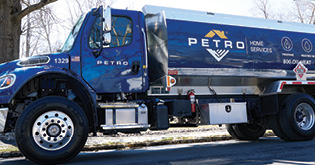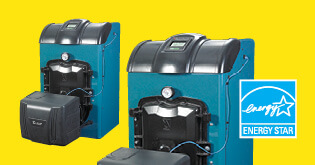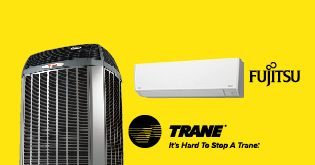- My Account:
- Sign In
- Register
- Make Payment

7 ways to improve indoor air quality and reduce air pollution in your home.
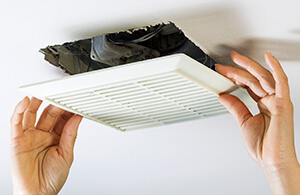
Bumper-to-bumper interstate traffic. Billowing industrial smokestacks. These are just a few of the images that spring to mind when we think about air pollution. But what about indoor air pollution? Do you ever think just how safe the air is inside your home?
The truth is, air pollution in your home can be just as bad - or even worse - than it is outdoors. And with the average American spending 87% of their life indoors, you’d think that indoor air quality would be something we’d hear about more often. But don’t panic! With a little preventative maintenance and some basic knowledge, you can take immediate steps to improve your indoor air quality today.
Common air pollutants.
Air pollutants can range from contaminants brought in from the outdoors by your pets to dangerous gas leaks. Carbon monoxide is a common air pollutant resulting from natural gas that escapes into your home without being burned off. Older homes may contain asbestos and lead particles, which can be damaging to the lungs when released into the air. In bathrooms and kitchens, mold and mildew can become a nuisance where moisture levels are typically higher than in the rest of your house.
Here are 7 things you can do right away to improve the air quality in your home:
1. Change your AC filter.
Air-conditioning systems are always working to give your home that perfect temperature all year round. But while they’re cycling through all that air, they’re filtering out some of those common air pollutants. Eventually, their air filters fill up and stop doing their job. Not only does that cause trouble for your indoor air quality, it also wears down your AC system, which can lead to costly repairs down the road. So, be sure to change your AC filters regularly, or get an air conditioning service plan which normally includes a filter change – especially if you are allergy-prone or live in a metropolitan area with high levels of pollution.
2. Don’t forget about other air filters.
Your AC filter isn’t the only thing working to keep the air clean in your home environment. If you really want to improve the air quality in your home, be sure to check the filters in your other household appliances. Your vacuum cleaner, clothes dryer and kitchen vents should all be inspected and maintained periodically. It’s recommended to clean or replace these common household filters every few months.
3. Check your air ducts.
Air ducts are responsible for distributing hot and cold air throughout your home, providing a comfortable climate in every room. But ducts that are not installed properly or maintained can distribute contaminants from one room to another. Over time, dust, dander and even mold can accumulate in your ducts, reducing the overall air quality. Hire a professional to make sure your ducts are circulating fresh, clean air.
4. Use cooking vents.
Many indoor air pollutants come from the kitchen. Gas stoves release harmful contaminants, including carbon monoxide and nitrogen dioxide. Even electric burners produce those same pollutants in lower levels, as well as other particles that can be easily absorbed into your bloodstream. So, when you’re cooking, be sure to turn on your kitchen vents, or open a window to help filter out the air even more.
5. Keep your rugs and carpets clean.
Rugs and carpets do more than increase the comfort of your home. They act as their own air filters, trapping dust and other particles in their many fibers. Clean your carpets and rugs weekly and they will keep working for you, improving the air quality in your home just by lying there!
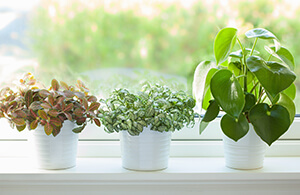
6. Control humidity in your home.
Humid and moist conditions breed mold and mildew that can trigger respiratory issues like allergies and asthma. Depending on your location, the hot summer months can bring about especially humid conditions. Reduce the amount of moisture in the air and curb the growth of irritating molds with a few well-placed dehumidifiers. There are a variety of humidifier options that will help maintain consistent humidity levels and create comfortable living conditions in your home.
7. Buy indoor plants to freshen the air.
Plants are nature’s natural air filters. Buying a few indoor plants can do wonders to improve the indoor air quality in your home while enhancing your home décor. Small plants like ferns and lilies (which bloom indoors) and larger palm trees are the best options to pull contaminants out of the air.
Need help?
Keeping the air in your home pure and breathable requires diligence and preventative maintenance. Now that you’ve learned a few simple steps you can do yourself to reduce indoor air pollution, consider setting up an appointment with a Petro Home Services professional. We have a range of service plans that include AC filter replacement and more to help keep your air clean. Contact Petro Home Services today and breathe easy knowing the air in your home is clean and safe.
Petro Home Services is proud to not only serve communities in DC, CT, MA, MD, NJ, NY, PA, and RI but we also proudly acknowledge the skills and experience of our expert team behind all resources. With insights on topics ranging from heating oil facts to common air conditioning questions, you can rely on Petro Home Services for facts and information to help you understand more about your heating, cooling and home comfort needs. This article and all articles on the Petro Home Services website have been approved by our team of home service experts.

